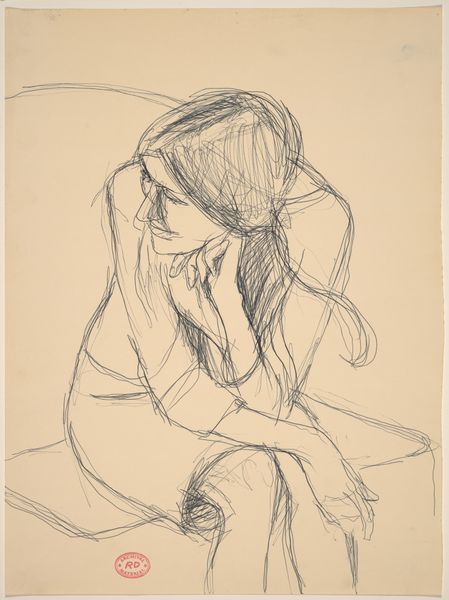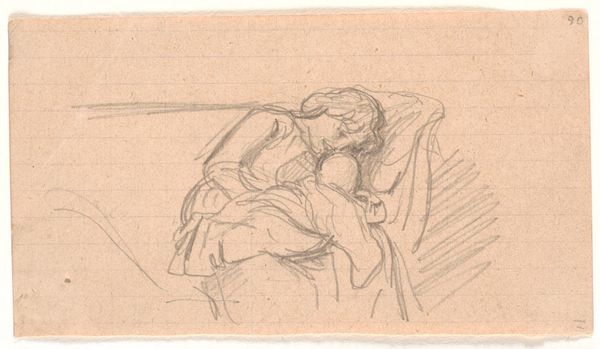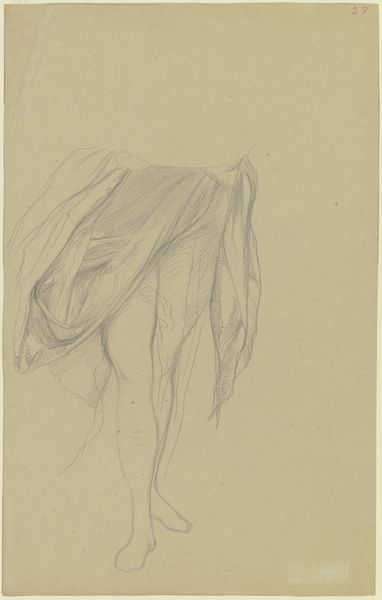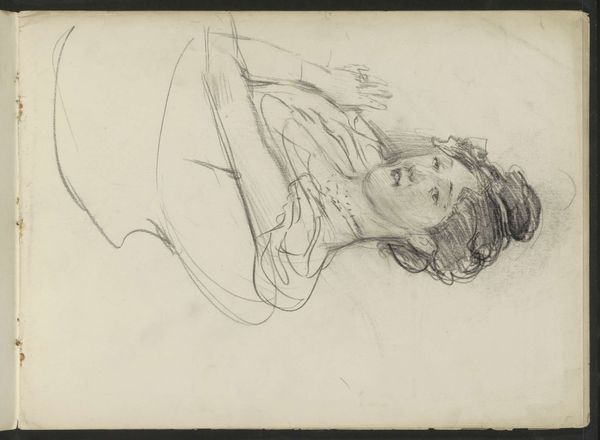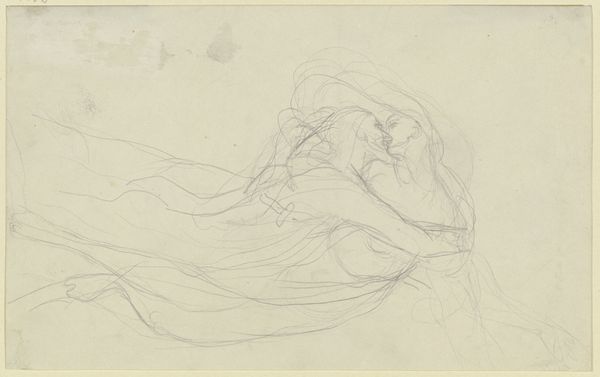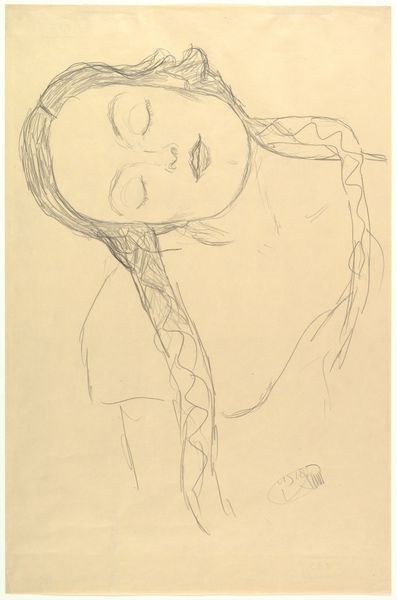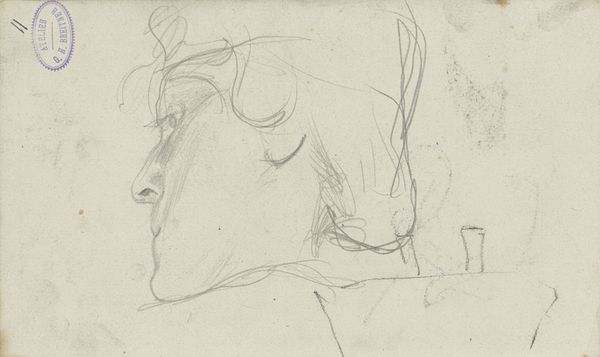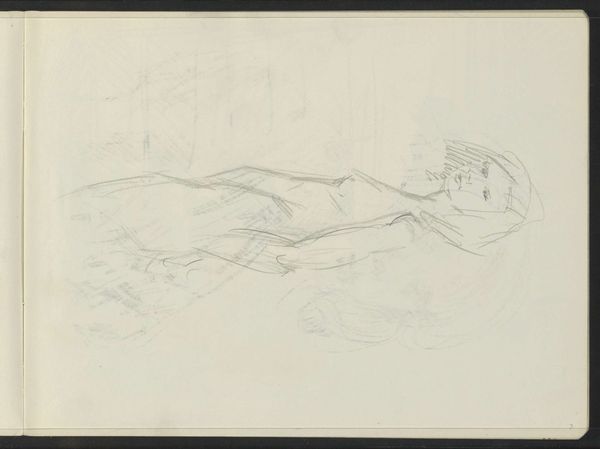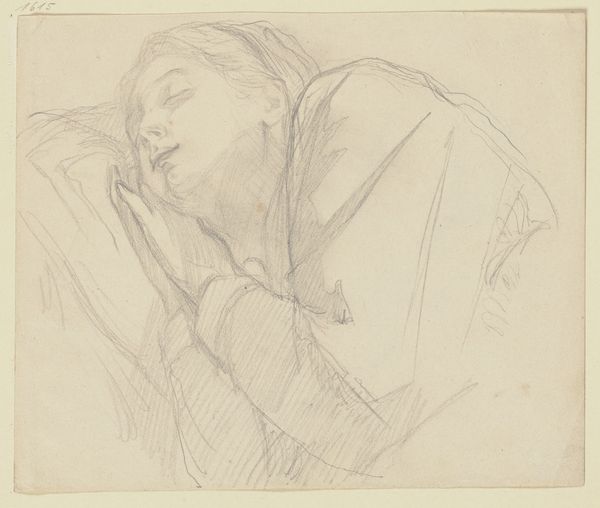
drawing, paper, pencil
#
portrait
#
drawing
#
figuration
#
paper
#
pencil
#
portrait drawing
Copyright: Modern Artists: Artvee
Editor: This is Henri Matisse’s "Modèle endormie," or "Sleeping Model," created around 1941, a pencil drawing on paper. It's striking how minimal the lines are, yet they so effectively convey a sense of peace and repose. What do you see in this piece, looking at it through the lens of formal analysis? Curator: Initially, the sparseness captures my attention. Note the economy of line; each stroke appears deliberate, distilled to its essential function of delineating form and shadow. Observe how Matisse uses hatching to suggest depth, particularly around the model’s face and the folds of her clothing. Editor: It almost feels unfinished, yet the composition works. How intentional do you think that was? Curator: Intentionality is, of course, inferred through rigorous examination. The seemingly casual approach belies a sophisticated understanding of composition. The positioning of the figure within the frame creates a visual tension, a dynamism despite the stillness of the subject. Consider also the contrast between the loosely rendered hair and the more defined lines of the facial features. Editor: I hadn't considered that contrast before. Does that difference create some kind of…emphasis? Curator: Precisely. The tighter rendering of the face, achieved through more concentrated and carefully placed lines, directs our gaze and anchors the composition. The overall tonal range, from light to shadow, while subtle, generates an effect of plasticity on a 2-dimensional surface. Do you observe how the marks create their own internal language? Editor: That’s fascinating. I now see how each seemingly simple element interacts to make the artwork's overall structure much more complex. Thanks, that’s given me a whole new way of thinking about it. Curator: Indeed. Paying closer attention to the elements empowers you to understand what it tries to be at the end.
Comments
No comments
Be the first to comment and join the conversation on the ultimate creative platform.

